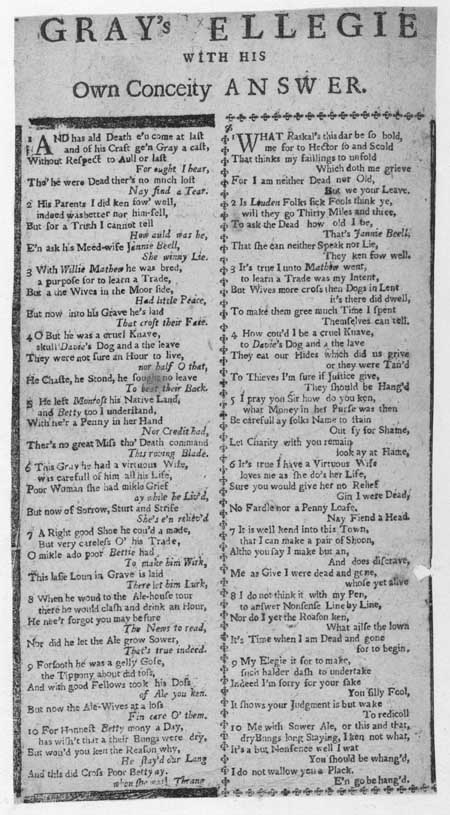Commentary
This broadside begins: 'GRAY'S ELLEGIE WITH HIS Own Conceity ANSWER'. The first verse of the elegy reads: 'AND has ald Death e'n come at last / and of his Craft ge'n Gray a cast, / Without Respect to Aull or last / For ought I hear, / Tho' he were Dead ther's no much lost / Nay find a Tear.' This light-hearted elegy on a character called Gray paints a very damning picture of him indeed, and is accompanied by his own reply in which he protests his innocence over various allegations. Since elegies are typically a lament for the dead, Gray has managed a tremendous feat in replying to his! This particular elegy is written in the popular verse form known as 'Standard Habbie', in which the first, second, third and fifth lines have four beats and rhyme, and the fourth and sixth lines are of two beats and also rhyme. Gray apparently was a drunken shoemaker from Montrose. Broadsides are single sheets of paper, printed on one side, to be read unfolded. They carried public information such as proclamations as well as ballads and news of the day. Cheaply available, they were sold on the streets by pedlars and chapmen. Broadsides offer a valuable insight into many aspects of the society they were published in, and the National Library of Scotland holds over 250,000 of them.
View Transcription | Download PDF Facsimile
|
 |
Probable date published:
1715- shelfmark: Ry.III.a.10(102)
 View larger image
View larger image
|


